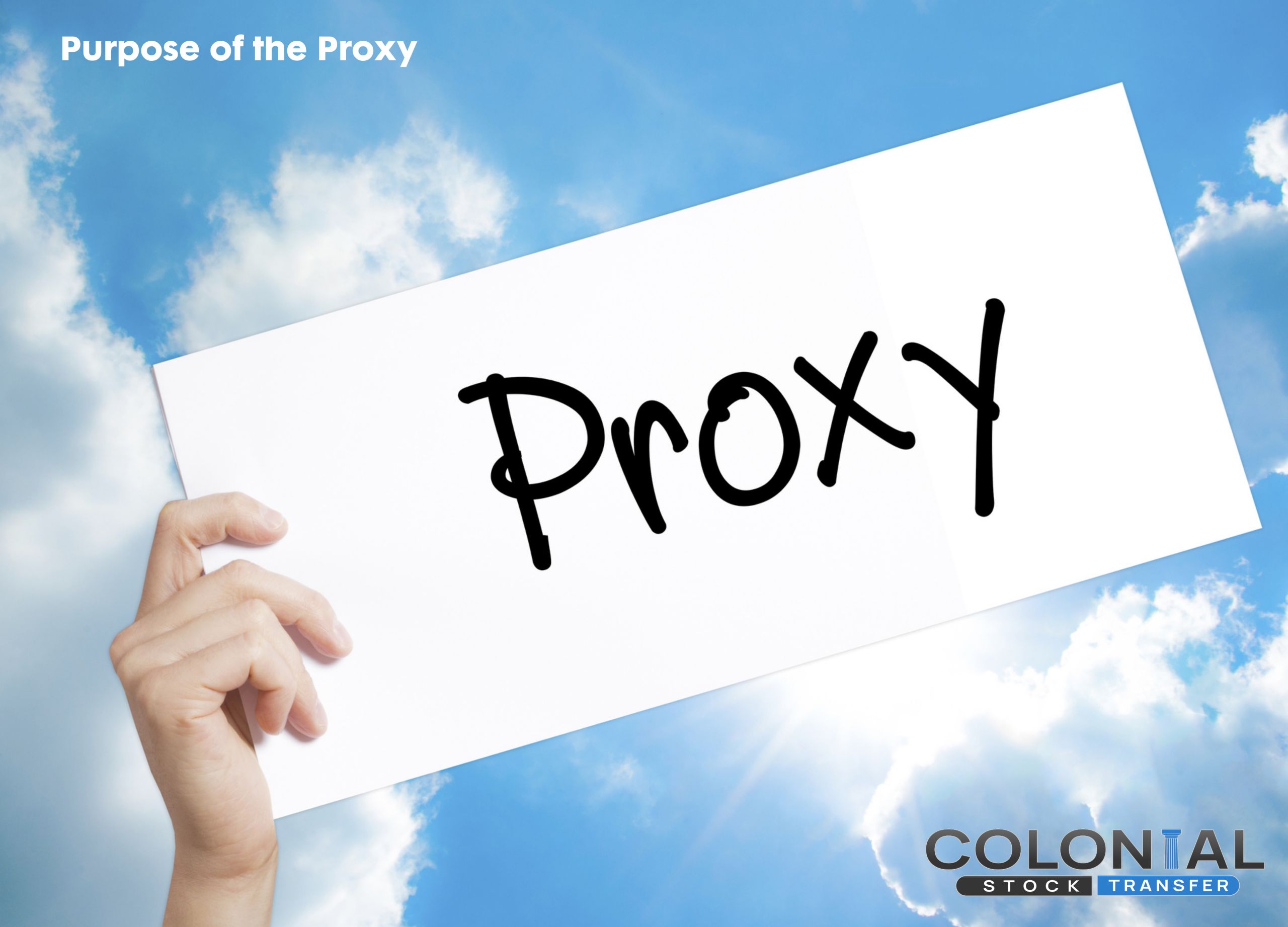
Shareholders, by virtue of their ownership interest in a corporation, are usually entitled to one vote per share in corporate elections or certain other policy decisions. This is true for the approval or disapproval of pension plans, additional stock authorizations, and mergers. If the shareholders can attend the annual meeting or special meetings called from time to time, they can cast their allotted votes directly. But attendance at a corporation’s shareholder meeting is, more often than not, impractical. Shareholders of a large company can be scattered among all 50 states, and gathering them all together would be nearly impossible. For this reason, the proxy exists.
What is a Proxy?
A proxy is an authorization to vote on the shareholder’s behalf. The term is applied both to the document that authorizes the vote to be taken, and to the person empowered to vote. Transfer agents ordinarily serve as the proxy agent, distributing and collecting proxy materials for the corporate issuer or a proxy group organized by minority or dissident shareholders.
The proxy material that the transfer or proxy agent is responsible for transmitting to shareholders typically consists of:
- An annual report, if the vote is to occur at an annual meeting;
- A proxy statement describing the officials nominated to be board members or explaining the issues to be voted on; and
- A proxy voting card imprinted with the holder’s name and sometimes the number of shares held.
The transmission of proxy materials is straightforward when the securities are all registered in the names of individual holders. The agent simply mails the materials directly to the shareowners, who then mark the voting card and send it back. If some shareowners fail to mark their proxy voting cards, their shares will be voted in the way indicated on the card. For example, the card may include the following statement: “Unless you indicate otherwise, this proxy will be voted FOR the election of directors, FOR the proposals of the board, and AGAINST the proposals of the stockholders.” This frees the proxy agent from having to mail reminder letters and to track down apathetic shareholders.
Broker and Depository Voting
At least 20 business days prior to the record date for the meeting, the proxy agent sends search cards to the custodians requesting an indication of how many sets of proxy materials are required for mailing to the beneficial owners. The custodian must respond within seven days.
The agent then sends the correct number of proxy materials to the custodian who must, within five days, forward a set to each beneficial owner. Once the custodian determines how the beneficial owners wish to vote, it signs the proxies, indicates how to vote, and sends the cards back to the agent.
When the securities are registered in the name of a custodian and held in a securities depository, the proxy transmission process takes on another dimension. The depository furnishes the proxy agent a list of its participants – banks and brokers – who then receive search cards directly from the proxy agent and are responsible for passing the materials on to the beneficial owners. The beneficial owners indicate how they wish to vote, and the custodians sign the proxies and send them directly to the proxy agent, bypassing the depository. Again, SEC rules specify how this two – way transmission process works and within what tune limitations.
To speed the proxy solicitation process when numerous parties intervene between the proxy agent and the owners of the securities, some depositories use an omnibus proxy plan. Under this mechanism, a depository, in whose name the securities are registered, sends a list of beneficial owners, who are the bank and broker participants, to the proxy agent. This list is composed of beneficial owners who have certified that they do not object to their names being given to the proxy agent. Those who have so certified are called non-objecting beneficial owners. The agents then can send the proxy materials directly to the non-objecting beneficial owners rather than have them filter down through the registered owners.
Tabulation of Votes
The proxy agent, once it receives the cards that indicate the proxy votes of registered and beneficial owners, examines each card to verify that it bears an appropriate signature. It then counts the votes for and against each candidate or proposal voted on and reports the results to the corporation, its solicitors, or in a case where the proxy agent is working for a dissident group, to that group or their solicitors.



